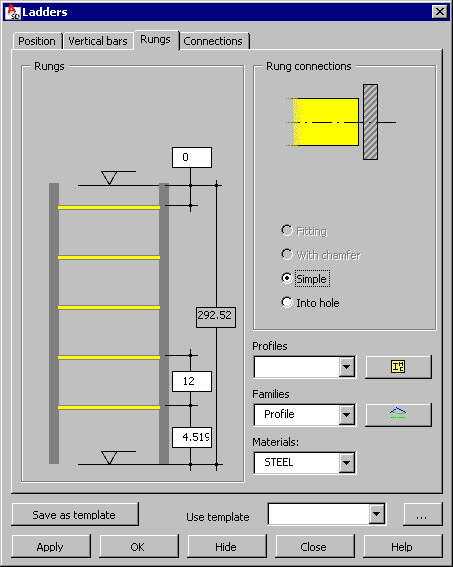Use the options on the Rungs tab to define data concerned with ladder rungs: profile type, family type, and material.

Specify parameters in order to distribute rungs over the ladder length (see the drawing below):
- A - vertical spacing of rungs
- B - distance between the lower floor level and the lowerest rung
- C - vertical distance between the highest rung and the upper floor level

Values A, B, and C are strictly correlated with each other; by default, the value C is assumed to be 0 (the highest rung is placed at equal height with the upper floor level). If, for the given values of A and C, the B dimension is too small for the lowerest rung to be fixed, the value of parameter C is automatically adjusted.
The difference between the upper and lower floor levels is displayed as a read-only parameter.
Under Rung connections, specify the method of fixing a rung to vertical bars (the options available here depend on the profile of which the vertical elements are made):
- For angles and flat profiles - Simple connection (the rung end fits the profile face) and Connection into hole
Simple connection Connection into hole


- For tubular elements - Fitted connection and Chamfered connection
Fitted connection Chamfered connection


Use the options in the lower part of the dialog to assign attributes to the rungs of a generated ladder: bar profiles, family types of bars, and material.
Profiles available on the selection list are those defined in the Profile List dialog. To add a profile to the list, click ![]() . The Profile list dialog displays, where you can select a profile.
. The Profile list dialog displays, where you can select a profile.
Profile families available on the selection list are those defined in the Family Manager dialog. To add a family to the list, click ![]() . The Family manager dialog displays, where you can select a family.
. The Family manager dialog displays, where you can select a family.
After you finish defining parameters of the ladder vertical bars, click the Connections tab to display the Ladders - Connections dialog.
See also: